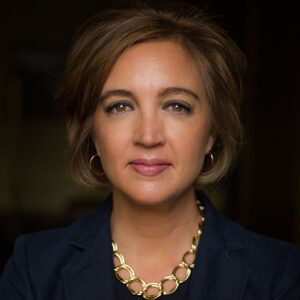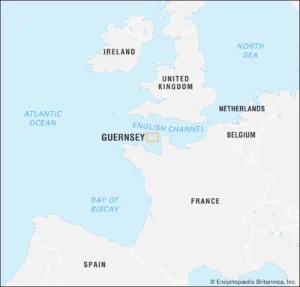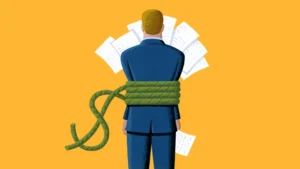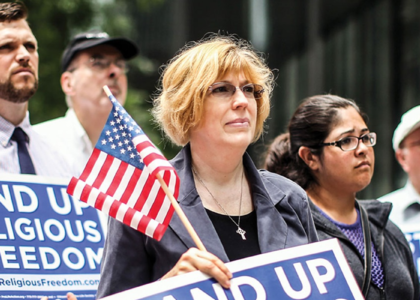“why did I have to research my rights in order to be treated fairly?“
Many of us want to make a difference in our lives, find our purpose and create our legacy. Shaped by our past, we look toward the future, and toward creating a better world for those around us.
As the daughter of an immigrant and refugee, Katica Roy is driven by a passion to eradicate economic inequality and to champion the rights of refugees, women, and children. She has written numerous articles about intersectional gender equity for different national media platforms and uses storytelling and data-stitching to create a common calling toward achieving gender equity. Her articles garnered over 2.9 billion impressions.
I was thrilled to have Katica join me on today’s episode for a fascinating discussion on gender and the economy.
Our Guest
Katica Roy

Katica Roy is one of LinkedIn’s 2022 Top Voices for Gender Equity, the 2020 Colorado Entrepreneur of the Year, 2019 Stevie Entrepreneur of the Year, Top 25 Most Powerful Woman in Business, a 2018 Denver Business Journal Outstanding Women in Business finalist, a 2018 Colorado Governor’s Fellow, and was named a Luminary by the Colorado Technology Association in 2017, recognizing her as a visionary technology leader in Colorado. Katica is the CEO of Pipeline, an award-winning company that uses advanced technology to make intersectional gender parity a reality in our lifetime. In addition to its core platform, Pipeline launched the first gender equity app on Salesforce’s AppExchange. Pipeline was also named as one of TIME Magazine’s Best Inventions of 2019, Fast Company’s 2020 World’s Most Innovative Companies, Fast Company’s 2021 Next Big Things in Tech, Fast Company’s 2022 World Changing Ideas. Pipeline is backed by both Accenture and Workday.
An Interview with
Katica Roy
Amy Allebest: Welcome Katica Roy–we’re so excited to have you here with us. I wonder if we could start by having you introduce yourself to listeners and tell a little bit of your personal story: where you’re from and some things that inform the lens that you bring to your work?
Katica Roy: You bet! Thank you so much for having me today.
I am a Gender Economist which would mean–for folks who may not know what a Gender Economist is–I look at the economy through the lens of gender and intersectional gender equity. So gender plus race and ethnicity and age.
I’m also the CEO and founder of Pipeline, which is an award-winning company that increases the financial performance of companies through closing the intersectional gender equity lens. We actually did our research study across 4,000 companies in 29 countries and what we found was that for every 10% increase in equity, there’s a 1-2% increase in revenue. So that’s the model of our platform.
More broadly, I think for me…as for why I started Pipeline and how I got here to recording this podcast today, is that I’m the daughter of an immigrant and refugee and that had a lot to do with why I started Pipeline. My mom was born in 1939, the year that World War 2 began, on the Isle of Guernsey (which is one of the Channel Isles of the United Kingdom). A year later, when France fell to the German army, Prime Minister Churchill doubted his ability to defend the Channel Isles and so he evacuated them. 5,000 children were evacuated and my mother was one of those children. She was on the last boat off. She was separated from her four older siblings and her mother. She was placed into an orphanage and adopted a year later. She actually came here to the United States when she was 21, when she was emancipated for equality and opportunity. So that’s my mom.

AA: I have one more question. So she was separated from her mom and her siblings, but did she ever find out what happened to them?
KR: She did. So her mother, by way of my father, helped. She was able to find one of her siblings and then she and that sibling hired a private investigator and found the other three siblings as well as her mother. Her mother was later in years at that point, and actually passed away before they were ever able to meet, but our family has been in contact with two of the siblings; the sister that my father found, as well as the brother who is still living in Guernsey.
AA: My goodness. I know that’s a tangent, but that was just too fascinating and heartbreaking of a story to just not dig into that a little bit. That’s so hard.
KR: Yeah, you can just imagine what it would be like for a little girl (not yet 2) to go to a new place, afraid and alone, all by herself. The impact that might have combined with the ability to get through, that pure tenacity and grit to survive and make the most of what you could given what you had.
You know, my father was a refugee. He escaped from Hungary after the fall of the 1956 Revolution. He was 34 at the time, he had been a POW in the Second World War, lost all but four of his teeth to malnutrition at the age of 23, and when the Hungarian Revolution fell he decided it was better to risk his daughters’ lives in pursuit of freedom than to commit their futures to living under communist rule. And so my three older sisters were born in Hungary. When they escaped they were 3, 7, and 8 and they walked across a minefield with the help of Hungarian Freedom Fighters to cross the border into Austria and arrive to a refugee camp. Less than two months into their stay in the refugee camp, President Eisenhower sent Air Force One to bring 21 Hungarian refugees to the US on Christmas Day, 1956. And they were on that plane.
AA: Oh my gosh.
KR: So three of us were born in Hungary, and three born here in the United States. The idea that it took one person in a position of power, who happened to be President Eisenhower, to stand up and say this will not happen, not on my watch, I will do something about this…that changed the trajectory of not only my family, but also my life and what were the opportunities that I would have. That was a huge part in me actually starting Pipeline, to take all of these opportunities that I had been born into in the United States and do something with them.
That’s one back story. There’s two other quick ones that I will tell, but the trifecta of those three is really how I arrived to be a Gender Economist, to be a Founder, to be here with you today. The second is that I am the youngest of six kids: five girls, one boy. And all the things that Justice Ruth Bader Ginsburg fought for in her career are the things that I saw manifest in my sisters’ lives; the lack of economic opportunity that impacted not only them, but also their children. So things like you couldn’t get a credit card as a woman without a male cosigner. You couldn’t get a business loan as a woman without a male cosigner. You couldn’t get an apartment as a woman without a male cosigner. All these things and more, they were a reality in my lifetime, and I watched this as a little girl thinking, this makes no sense. My oldest sister came here at 8-years-old, didn’t speak any English, and ten years later graduated as valedictorian of her high school class, and was barred from full participation in the economy.
And the last piece is that I am a bread-winner mom for a family of four. And I fought to be paid equitably twice and won. So I also had this experience, and I’ll tell you one story very quickly, but after my daughter was born, when I was on maternity leave with her, my boss was “optimized”, which is a fancy word for fired. And when I came back from maternity leave, the day after, I was asked to take on one additional team, so I had two teams that I was managing, and then two weeks later I was asked to take on a third team, which is a great opportunity for bread-winner mom with a family of four.
But my male colleague was one pay grade higher than I was and he took on one team and also received additional compensation for that team, and I received nothing. I thought wait a second, this is not okay. So I tried to talk to them and kind of realized over the course of some conversation that probably not a lot was going to happen. I thought there’s got to be something that makes this illegal. I did my research and found the Lilly Ledbetter Fair Pay Act (which happens to be the first piece of legislation that President Obama signed into law) and I called HR and said, this is a Lilly Ledbetter issue, and every time you pay me the statute of limitations starts over. What do you want to do about it?
My oldest sister…graduated as valedictorian of her high school class, and was barred from full participation in the economy.
AA: Wow. Fantastic.
KR: To their credit, they increased my level, increased my pay, and gave me back pay so certainly it’s a story of success. But what dawned on me is, why did I have to research my rights in order to be treated fairly? And it was really that moment that catalyzed ultimately founding Pipeline.
AA: I have another question about that, just one detail. How did you find out that your coworker was being paid more than you were? Did you just ask him?
KR: I did.
AA: Did you suspect it or how did that go down?
KR: I knew that he was getting paid more as a base salary because he was one pay grade higher than I was and I had all of the salary information because I was a manager. But then I just said to him, hey, what are they paying you for that extra team? And he told me.
AA: Okay.
KR: I just asked. It was sort of presumptive ’cause I just assumed that they were and figured if they weren’t he would tell me.
AA: Yeah, yeah, that’s so great. I love that that was a success story and that you found out that the law is on your side. But like you said, that means something’s wrong with the system. The system is not functioning the way it’s supposed to if there’s a lot to prevent that from happening and the people aren’t following the law. And you have to spend your time–and you were a mom at the time–if you’re working full-time and you’re a mom, for you to spend extra time researching your rights and then fighting for equitable pay…then the system isn’t working, right? So what happened next?
KR: After that, I stayed at that company for a while longer and then I worked at a couple other companies and then ultimately founded Pipeline. What I was really interested in as a Gender Economist was not equity as the right thing to do–I have an MBA as well–but equity as a massive economic opportunity and how you operationalize that in companies. Because if we make equity the right thing to do, unfortunately what happens is it becomes optional. It doesn’t become a necessity for maximizing shareholder value, which is what CEOs are held accountable for.
Of course, we can also talk about the broader economy. It can also become an us-versus-them narrative, which isn’t true because gender equity is not only about women, it’s about men, and it’s about everyone. It expands economic opportunity for everyone. So I was very interested in both how we change the narrative so we can actually solve this problem, and how we create solutions to catalyze our time toward equity.
What I was really interested in as a Gender Economist was not equity as the right thing to do…but equity as a massive economic opportunity
AA: Tell us a little bit about how that is accomplished. What do you do at Pipeline? And how does it move the needle?
KR: So I mentioned the research that Pipeline started with, that found that an increase in equity is tied to an increase in revenue. What we found in the market is that 96% of CEOs put equity in their top priorities. The issue is that only 22% of employees actually see it, equity, shared and measured. So you have this giant 74 point gap between what CEOs in companies say is important and the actual employee experience. This was my experience. The company I worked for was recognized for being committed to equity. I’m not going to say their name because this is not about the company. And yet my employee experience was that that commitment was not operationalized, and so my experience as an employee was that I had less faith in that company and their commitment because of my experience.
So what Pipeline does is we are a recommendations engine. If the company that I had worked for had Pipeline, I never would have had to advocate for myself to get paid equitably because Pipeline would have seen that there was a gap and would have made a recommendation to both HR as well as to my manager at the time. Here is the gap. Here’s a range to actually close that gap. What we do is, we basically connect to cloud-based HR systems like Workday, SuccessFactor, etc…There are five main decisions that companies make about their people, which are internal hiring (that’s mobility), pay, performance, potential, and promotion. When companies go to make those decisions, they post the job requisition, they submit a pay proposal, they save a performance review as a draft, that then sends a trigger to our Pipeline system and we run those decisions through algorithms and if we find any inequities, we make a recommendation. So we’re actually getting in front of those decisions.
One of the things that we found is that there are three key decisions that companies make across their talent each year, which is performance, potential, and pay. So for the average Fortune 500 company that has about 60,000 employees, that’s 180,000 opportunities to move toward equity each and every year. That’s what we make possible.
AA: I see. Okay, just being a little bit of a cynic: companies say they value equity because that is the right thing to say, but doesn’t that mean that they are having to pay their employees more? And so, do you find that they are resistant to wanting to pay half their employees as much as they’re probably worth because it shrinks their margin?
KR: You know, it’s interesting that you mention that. We haven’t found that so much to be honest, it’s more about the liability. But what’s interesting about that is that it’s not only women who are paid less. When we look at pay, one of the things we’re looking at is representation not only at the company levels, but in functions levels compared to what percentage of the pay gap they make up. And what that means is that we’ve closed gaps for men and women and non-binary. It’s really about creating equity for everyone.
I think that there’s often this false narrative where…you were talking about the profitability argument, that salaries (unless you’re a salesperson or SG&A) and the more that you can cut that the more profitable you’ll be: that doesn’t actually vet out in the data because you’re also talking about things like productivity. And in the broader economy, outside of companies, as American taxpayers we all subsidize when people are not paid equitably. The economy suffers when people are not paid equitably, when we don’t have equity of opportunity.

I think there’s a narrative–that I know is not true–that we can choose whether or not we pay for people. We cannot. We can choose how we pay for them, we cannot choose whether or not we pay for them. Would you like some examples?
AA: Yeah, I do.
KR: So in the broader US economy, some of those examples include that among people 65 and older, women are twice as likely to live in poverty in retirement than men. The pay gap ties directly to that. We can close the Social Security savings gap by a third if we close the pay gap. And over 56% of children that are living in poverty are living in households headed by women. So, not only are we leaving women behind, we are leaving the next generation behind.
To add some additional color to that, after the economic downturn of the pandemic and the different conversations that have been had…some of that has been talk about childcare, which–don’t get me wrong, it is important–but there’s a narrative there that is actually not true which says that mothers can choose not to work. It’s called the ‘myth of secondary income’, which is that a mom’s income is just for purses and shoes. It’s not for things like housing and healthcare and food and all the necessities. Here’s what the data shows: in the United States 40% of households with children under the age of 18, moms are the breadwinners. There are 16 million bread-winner moms, they support 28 million children. So that is our future, 40% of our future labor force, and we actually did some research and what we found was that the breadwinner-mom pay gap is the largest pay gap of any cohort in the US workforce. It’s sixty-six cents on the dollar.
Then when you start to look at that through an intersectionality lens, specifically gender plus race and ethnicity…for Black breadwinner moms, they have the largest gender pay gap of any women in the labor force, it’s forty-four cents a dollar and they support the majority of all Black children.
AA: Oh my gosh. So this data is a little bit different than what I’ve seen because you’re talking about breadwinner moms as opposed to just the data I’ve seen which is working moms broken down by race. But to qualify as a breadwinner mom, that means they’re making the majority of the income for the family?
KR: Yeah, so it’s either the majority or it’s all, which would be a sole breadwinner mom.
AA: Right, so that’s even more devastating because…oh my gosh, I was not aware of those numbers.
…not only are we leaving women behind, we are leaving the next generation behind.
KR: And we subsidize that. We don’t have a choice whether or not we pay for people. We pay for them, so how do we want to pay? Do you want to make an investment and that ultimately benefits everyone? This is why when we equate women’s issues with gender equity as synonyms, that’s not true. Women are part of the conversation and men are part of the conversation. And we can also talk about how gender equity impact men too, because there are very specific issues that are gender equity issues that negatively impact men more than women.
AA: I would like to talk about that actually, that would be a great thing to talk about next.
KR: Sure. I’ll talk about two of them and they’re connected. One is that mental health is largely a men’s issue. 40% of working dads would like to stay home with their children and there are two reasons that they don’t do that: identity (who will I be?) and isolation (who will I connect with?). Essentially it’s our definition of what it means to be a man. And what we see more broadly from a mental health perspective…and you look at things like mental health deserts and access to mental health in coverage (even if you have coverage from your healthcare provider) that men are more adversely affected by mental health–they account for 79% of all suicides, are more likely to die from mental health issues–and it’s this idea of I’m not supposed to get help. I’m not supposed to talk about what’s happening. We actually saw men’s mental health decline during the pandemic. It’s a really serious issue that we are not talking about, but we need to be talking about. Which is that almost half of working dads would like to have a different role in their families, and this ‘man box’ is really keeping them stuck.
AA: Wow. So what can be done about that? I mean I was just reflecting today…I’m re-reading the book We Should All Be Feminists by Adichie, and the quote on the back of the book that I was just looking at was saying “we need to raise our girls differently and we need to raise our boys differently.” We need to raise the whole generation differently. And so that’s been on my mind just today, but what would you say are some of the solutions for helping?
KR: For girls and boys?
AA: Yeah.
KR: Well, on the raising thing, I can talk a little bit about that. Let me talk about boys. I have one of each: a 15-year-old son and an 11-year-old-daughter. So, for boys there’s a few things that we need to do. One is we need to raise them with different models of what it looks like to be a man. And one of the key ways to do that is through sports. We often talk about the positive impact that sports has on women and girls, but we don’t talk about the adverse impact that sports can have on men and boys.
Boys see this both as the imagery of professional sports as well as their experience in the sports teams that are on from a fairly young age, which is that it’s more about winning. It’s about domination. It is in these ideas, like, I’m not supposed to get help. I’m supposed to man up and supposed to be a man. I’m not supposed to cry. And what we need to do is transform that culture of sports. The NBA is actually one of the professional organizations that has taken steps to begin to combat this. The 2016 players agreement had a clause whereby they can investigate domestic violence regardless of whether or not there were criminal charges. Major League Baseball and the NFL have yet to follow suit. That’s one: the imagery of what our boys see as both what it’s like to be a man, what it means to be a man, and the consequences of their behavior.
And then the second piece is the culture in sports teams for boys, that it should be less about winning–because quite frankly, from a math perspective, most of us will never be professional athletes, it’s a very small percentage, most of us do sports because it’s healthy–but that is more about character. It’s more about who you are and how you live your life. That’s a really key part to changing the structure of what it’s like to be a boy and grow up into a man.

For girls–it is so interesting because we do this to women in the workplace. We have women’s leadership programs and we’re gonna teach women, but…women are not broken. The system is broken. We need to fix the system. We focus on teaching women negotiation, we focus on ending the uptick in their speech and applying for jobs. The other half of the story is that the system doesn’t value them equitably. So for our girls we need to teach them to recognize inequity and to be able to respond to it. I’ll give you two very concrete examples of how I did this with my daughter. So my daughter, obviously, is my youngest. And one of the things that I noticed when she was little that didn’t happen with my son, was that people complimented her on her looks from 18-months-old. And so I responded and then taught her to say when people say, “oh, she’s so cute”, I would say “and she’s smart too.” And I taught her to say that when she could respond. When people say “oh you’re so cute” she can say “and I’m smart too.” Because I wanted to get away from this my work is in my looks, etc… also for her in her brain, it’s called schema, to create these pathways where when she’s complimented for her looks she automatically thinks “and I’m smart too.”
So that was one, and then the second piece when she got older….all these that we call microaggressions or biases, so things like interrupting women or women’s ideas not being heard. I wanted my daughter to understand that when someone interrupts her, it’s not because she didn’t say things in the correct way or she just needed to tweak that, it’s because it had nothing to do with her. That was about the other person. So what we taught her was that when she is interrupted she says “Excuse me, I’m speaking.” That she is not to be interrupted, that her words and her ideas have value, and that’s exactly what she says–she’s eleven and she says “Excuse me, I’m speaking.”
So those are a couple of examples of things that we need to do differently with our girls and boys.
AA: I love that. Another question that I wanted to ask you about is the specific economic implications of improving gender equity not just in the workplace, in a specific company, but in other areas of society, like politics. You mentioned Social Security earlier and higher education. Across the board, what are some of those implications?
KR: Yeah. I’m going to take a step back and then I will answer your question just to give people a frame of reference. So from 1970 to 2016, women added 2 trillion dollars to the US economy through their increased labor force participation. And we saw not all, but almost all–1.4 trillion dollars of that gain–wiped out during the pandemic, and we’re still about halfway, we’ve improved a little bit. Gender equity is not just a social issue, it’s actually a massive economic opportunity. Right now, the United States sits at a 3.1 trillion-dollar opportunity to improve our GDP through closing the equity gap. That generally takes the role of increased labor force participation, closing the wage gap, and then some other things like occupational segregation, etc.
But the other piece around the economics is that gender equity is something that cuts straight through the US economy, right? So for instance, in occupations or sectors that have pay gaps (almost all of them do. Ninety some-odd percentage of companies have pay gaps), we actually subsidize that pay gap. If you’re an American taxpayer, you offset that pay gap. You are paying for that. So that’s one way to understand that, and then the other piece that I would add to that is if you just look at the last jobs report in the beginning of July, and then also the number of jobs open, we currently sit at a 5.4 million person gap between the number of jobs that are open and the number of people who are looking for jobs. There’s almost two jobs open for every one person looking for a job, and yet we have 760,000 women missing from the labor force since the beginning of the pandemic. If we just bring them back, we can begin to close that gap. It is really an opportunity. It’s not just the right thing to do, it’s an economic opportunity for everyone. There obviously are other ways that we pay for this, from immigration to criminal justice and so on, but those are just a few ways that we pay that.
The other thing that I want to talk about very quickly from an economic perspective, because if you look at it from a labor economics perspective, you have education attainment, payment, labor force participation, and wages. We often talk about wages as the gender pay gap–that eighty-three cents on the dollar that’s coming into women’s wallets–but there are two additional ways that the wage gap actually comes out. It’s not only the money coming into mens’ wallets, it’s that women have more money coming out of their wallets, it’s the three-legged stool. Let me go to those two really quickly: one is student loans, and the second is the pink tax. Women are 57% of all college graduates and yet they hold two-thirds of all student loans. There’s almost a 10-point gap between their rate of acquiring bachelor’s degrees and higher and the percentage…
AA: Why?
KR: So the student loan conversation is a gender equity conversation. And the reason why that happens….there’s two. One is that the gender pay gap starts in college, so women have to borrow more money earlier and they are less able to pay it off faster. And the second is the importance of public education… that parents are less likely to financially support their daughters getting degrees than their sons.
Gender equity is not just a social issue, it’s actually a massive economic opportunity.
AA: I was going to ask like…it can’t be that, right?
KR: It really is. That is the importance of publicly-funded education: that in developed countries like the United States where we fund public education, that is critically important as a gender equity lever. That’s one.
The other piece around the pink tax…50% of the time, women pay 7% or more for items. That could be everything from dry cleaning to shaving cream to anything that’s gendered. One of the pieces of that is the gender tariff gap, which is that on average gender is actually part of the statistical calculations on tariffs for footwear and apparel. Women on average pay for 15.1% tariff and men pay and 11.9% tariff.
AA: Stop that! What?
KR: Sometimes men pay more, sometimes women pay more, but on average women pay more.
AA: Why? How?
KR: It’s written into the statistical calculations. So you could have a hiking boot or a t-shirt that are the same thing, but one is for men, one is for women, and the tariffs are different. This is one of the sneaky ways that gender inequity is baked into our economic system.
AA: Wow. I’m having a hard time processing this. I mean we’ve talked about this a lot on the podcast because it goes chronologically, in the first season especially we trace the evolution of the gender systems, and since women were —like you said earlier in this conversation—not even allowed to really participate in the economy, not allowed to participate in higher education or in politics. They didn’t even have their own money until recently, so how are they being taxed at a higher rate than men if they have never had as much money? And very recently, relatively speaking, didn’t even have any money: under the laws of coverture, all of their money was their husband’s. I’m just thinking, how did it change from women had no money and no participation in the public sphere to now an assumption that they would have money to pay?
KR: I don’t think it’s an assumption to pay. It is this: we often believe that public policy is gender neutral. It isn’t. It’s gender ignorant because, as the point that you made in your podcast, the system was not built for women.
AA: …or by women.
KR: Or by women. So when we assume that it’s gender neutral without doing investigation… when you do the investigation sometimes you find that it is gender ignorant. The gender tariff gap is one example of that.
And there’s actually pretty easy solutions. There’s two solutions to that. One is just remove gender from the statistical calculations, and the second is just to use the lower tariff rate.
AA: Across the board?
KR: Mhmm.
AA: Wow. That’s crazy.
KR: We tend to think that it’s just like this piece, that piece and not really understanding what the data says: that this is not set up to value women equitably and how critically important that is if we’re ever going to get the equity.
AA: Yeah. And going back to one thing that you said a few minutes ago–and I hope this is okay—but we were chatting before we started this episode about your education, and you told me something about your education and then your mom because…this is a mind-blowing revelation that you just dropped on me: that girls are supported by their parents less financially for higher education. But that shouldn’t surprise me because I’m thinking of Virginia Woolf watching all her brothers go to Oxford, and she went to the King’s College which is still a great college in London, but it wasn’t Oxford. And so many of the authors we read, that was the case. They watched their brothers go away to school, they were home-schooled, or went to not as good of schools and didn’t have the opportunities their brother’s had, so it shouldn’t surprise me that we’re still on that path. That’s a vestige. So do you mind sharing that personal detail from your life?
KR: Yeah, absolutely. So my mom, I talked about her history, but she was British and she really wanted to attend Oxford and study the classics. My grandfather was well-meaning, but this was in the late ’50’s and he said, well girls don’t get an education, they become nurses or secretaries. So, you know, you can pick one of those. And so when I was invited to apply to attend Oxford, I knew this story from my mother and one of the reasons that I went was sort of closing that loop from what had been denied to my mother over 30 years before. It was a full circle story and then she passed away a couple years ago, so we actually started a scholarship program in her name to support girls attending that education. But really that idea that she was told well girls don’t do that…

You know the other thing that folks are maybe not as aware of is…so I’ve been in the working world almost thirty years (just a few years shy of it). I was a political science major undergrad, legal studies emphasis intern in D.C. and I was the women’s rights…you know, I would have been educated about all of that…and I just thought I think the world is equitable. I don’t think there’s any more…Of course, the first time that I fought to be paid equitably I learned how naïve I had been. Experience is a great teacher. However there’s one really key mechanism that has happened in the workforce where—I think because we haven’t heard about it, and this has changed in the last 5 years or at least begun to change—is ‘binding arbitration’. Which is that we probably haven’t come as far as we think we have. We just don’t know it because in 1992 the Supreme Court actually decided a case which tipped the scales in employers’ favor in terms of using binding arbitration in employee agreements. You don’t have to sign it, you don’t have to sign a binding arbitration agreement. Contractually, by accepting a job, you can be bound by binding arbitration clauses. What that means for people who may not be familiar, is that you actually have to go into arbitration versus a public court of law, and that is administered by an arbitrator who may or may not be a lawyer who may or may not have to follow the labor laws that were actually designed to protect employees in the US.
Almost 40% of employees in the United States are actually covered by binding arbitration clauses and the thing that’s really insidious about binding arbitration is that typically the employer pays the arbitrator and they are more likely to win. And the more times they go to that arbitrator, the higher the win rate they have. And it’s completely confidential. So you have no 7th Amendment right. This is one of the things where it has been a real issue in terms of us finding out what is actually happening in the labor force.
AA: Wait, okay, so how is that legal is my question?
KR: Binding arbitration was originally started to essentially unclog the courts for commercial disputes. So two commercial entities had a dispute: instead of going to the courts, they would settle it through this. Two somewhat equal commercial entities could solve this issue. But then there was a case in 1992 which really tipped the scales in terms of employers being able to use that, and since that time it has grown exponentially.
AA: You’re not saying that it puts the onus on the worker to research the laws like you did when you found the Lilly Ledbetter law, but you’re saying that even if you found the law that you could go to them and they could just say “well that doesn’t really apply in this situation.”
KR: In my experience of fighting to be paid equitably I never filed a lawsuit or made a claim, I just stuck up for myself, that was a separate issue. But if you actually filed that claim, because you’re bound by this agreement, this binding arbitration agreement, it’s not actually public, it’s not in a court of law, you’re actually settling it behind closed doors.
AA: Wow. That’s really important to know, just for listeners to ask those questions. When you’re taking a new job, find out what the practices are at the company that you’re joining.
KR: People can search my name and binding arbitration on Google and I’ve written about it and what you can actually do. I’ve made recommendations for companies and also just so folks will know what it looks like for them because people will think “oh, I have to sign this agreement” but you don’t. Just by virtue of accepting an offer, that’s an agreement.
…this is not set up to value women equitably
AA: Okay. The last question I have for you, Katica, is something that you had written about was the lack of data-driven analysis within the current discourse around gender economics. What’s driving that lack of data-driven analysis?
KR: Checkbox diversity.
AA: What does that mean?
KR: That’s one of the ways. When we look at companies, they mostly spend 8 billion dollars on gender equity solutions, largely implicit bias or unconscious bias training. The interesting thing about that is it either has no impact on moving toward equity, or unconscious bias training can actually reinforce stereotypes so it makes it worse. Just like we wouldn’t manage our businesses without data and metrics that actually move that company forward, we really need to look at equity and decision-making around equity from a data-driven perspective. Rather than checkbox diversity, where everybody’s gone through this unconscious bias training, what we need to do is to get in front of the decisions that we are making–Internal Hiring, Pay, Performance, Potential, and Promotion—ensure that those decisions are equitable before they’re made. Also we need to change the narrative to instead of just being a social issue or the right thing to do, it’s actually a massive economic opportunity.
One of the key levers that CEOs in particular can pull to maximize shareholder value is equity. And using technology such as Pipeline, we now have the opportunity to do that and do it at scale. To give you one quick data point, what we have found across our implementations at Pipeline is that companies improve equity by 67% in the first three months on the platform. When you take all of those little decisions together and you’re using technology at scale, there’s a huge opportunity for us to leap forward in our pursuit of equity. One of the things we often talk about is that with Pipeline the question isn’t “can we close the gender gap in our lifetime?” We can. We have the technology to do it. We have the ability to do it. The question is, “will we choose to?”
AA: Well that’s kind of inspiring, I guess. There’s room for optimism in looking at that; it can be done at least. But I guess on the other hand, it’s disheartening sometimes when you watch people make choices that don’t…
KR: I think we have to keep talking about it, because if we keep talking about it and we keep raising awareness…The reason why the narrative and talking about it and stories and data together matter is because if we think about the problems differently, we will think about the solutions differently, and we will get to solutions that actually achieve equity in our lifetime.
AA: Wow, I learned so much, I’m so grateful for your time today. Thank you so much for sharing your expertise with us on the topic. As a historian I read old books all day, and so hearing about….I mean I care so much about gender parity in the world, but I really have not spent any time at all looking at gender economics, and so this was an incredibly valuable conversation for me and for our listeners. Thank you so much for being here.
KR: Absolutely. Thank you for having me.
The question isn’t “can we close the gender gap in our lifetime?”

The question is, “will we choose to?”
Listen to the Episode
&
Share your Comments with us below!





